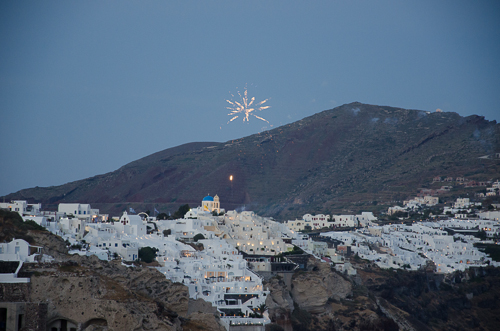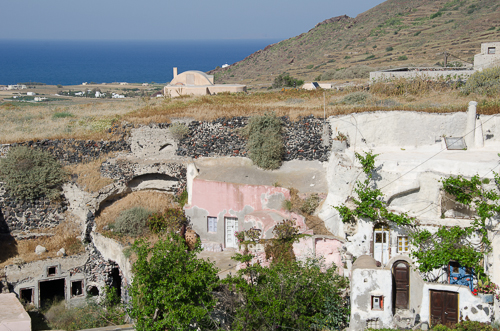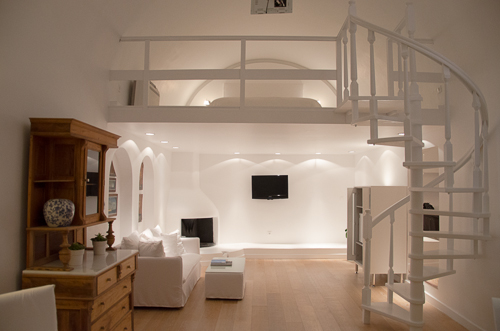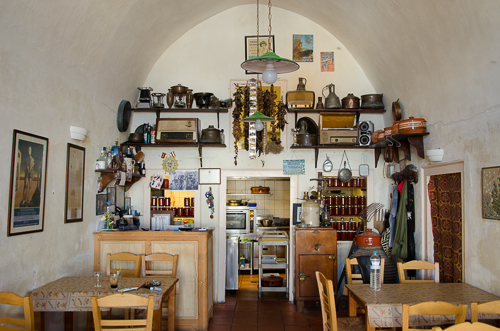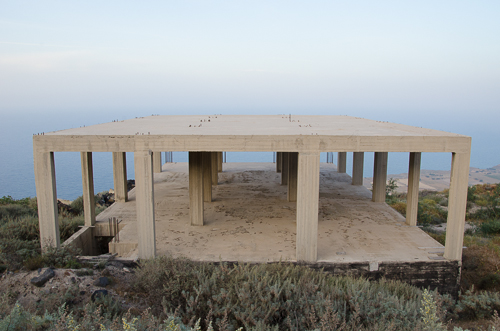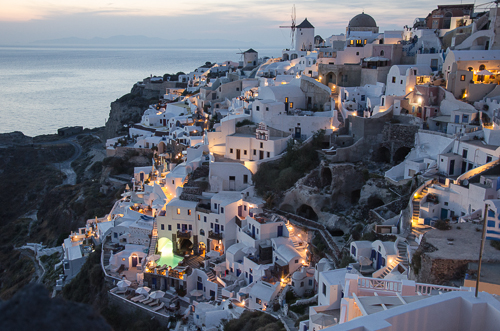 Unfolding along volcanic rocks, the traditional village of Oia extends for almost 2km along the northern edge of the caldera that forms the island of Santorini.
Unfolding along volcanic rocks, the traditional village of Oia extends for almost 2km along the northern edge of the caldera that forms the island of Santorini.
The topographical particularity of this locale is staggering. Santorini’s central part collapsed as the result of a big volcanic eruption in 1660 B.C, forming this imposing cauldron-like feature. Oia can be reached by a road that meanders atop steep cliffs along the eastern periphery of the island. Sections of this road become so perilously narrow and ridge-like that it can barely accommodate two lanes of traffic. Perched 70-100m above sea level, Oia itself is divided by the central road into two sections: one facing the caldera cliff, characterized by white-painted dwellings, once used by seamen, carved into niches in the rock; and the other, a wide swath of largely agricultural land marked by conventional houses.
The ground is composed of successive layers of fragments and lava. The uppermost layer consists of pumice stone and a sub-white ash called ‘theraic earth’ that is easily excavated and gave rise to an underground cave habitation pattern with vault-like spaces receiving light from small openings on the built-out front. Many of the simple seamen's houses have become guest homes, hotels and restaurants, with narrow passageways running between them.
Oia seduces visitors with its blue domed churches, sun-bathed verandas, and quaint cobbled alleys lined with taverns and shops. But most of all, it is renowned for its enchanting sunsets, best experienced at the ruined castle at the tip (above).
A differentiating architectural element in the island’s vernacular is the vaulted roof of dwellings that resulted from their subterranean typology. It became more common after strong earthquakes in 1956 struck the island and destroyed or damaged half of its buildings. Restrictions to new construction have been put into place in order to minimize risk from future earthquakes and to preserve and restore – or find new uses for – traditional settlements.
A number of unfinished construction sites dotting the Aegean landscape stand in watchful reminder of the harsh economic winds affecting Greece.
